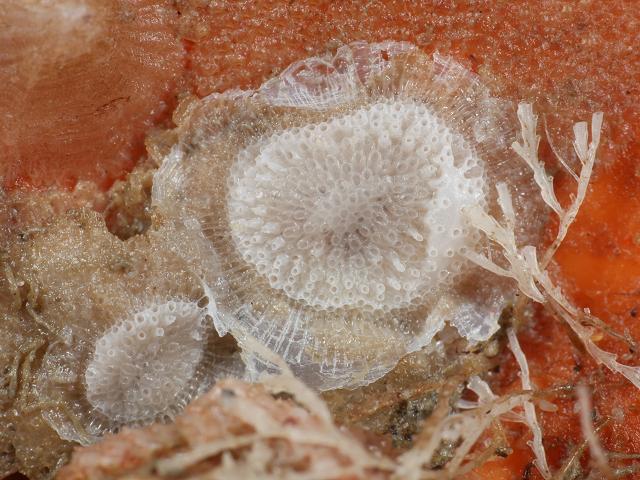
APHOTOMARINE
An educational resource dedicated mainly to the photography
and diversity of marine life that can be found in coastal waters
and intertidal areas of Great Britain and Ireland by David Fenwick.

Plagioecia patina (Lamarck, 1816) - A cyclostome bryozoan (Bryozoan images)
Scroll down and rollover titles to change screen image or click on title to view image.
Cyclostome bryozoan
Plagioecia patina
- on orange plastic bottle 1
Plagioecia patina
- on orange plastic bottle 1
Cyclostome bryozoan
Plagioecia patina
- close-up 1
Specimen above, one of two specimens found on a small orange plastic drinks bottle that had been grown over by kelp. The kelp subsequently washing up, with the drinks bottle on the shore at Marazion, Cornwall. 15.02.15.
Cyclostome bryozoan
Plagioecia patina
- under rock / lowershore 1
Cyclostome bryozoan
Plagioecia patina
- under rock / lowershore 2
Cyclostome bryozoan
Plagioecia patina
- under rock / lowershore 3
Species found under a stone, on an extreme low tide at Long Rock near Penzance, Cornwall. 22.03.11. SW4981530837; also at Marazion, Cornwall. 11.03.12.
Cyclostome bryozoan
Plagioecia patina
- colony with gonozooids 1
Cyclostome bryozoan
Plagioecia patina
- colony close-up 1
Cyclostome bryozoan
Plagioecia patina
- colony close-up 2
Specimen found attached to an old lobster creel that was trawled up and brought back to Newlyn Marina, Newlyn Harbour, Newlyn, Cornwall, 15.08.17.
Cyclostome bryozoan
Plagioecia patina
- under rock / lowershore 4
Cyclostome bryozoan
Plagioecia patina
- under rock / lowershore 5
Cyclostome bryozoan
Plagioecia patina
- habitat / location 1
Specimens above were found under rocks at low water on an extremely low tide at the private beach at Watermouth Cove, near Ilfracombe, Devon, 13.06.18.

The main objective of this website is in furthering environmental awareness and education through the medium of photography. To increase awareness and access to the wildlife of the region and help
people find and identify it. Sometimes the difference between species is obvious but many species can only be determined by observing microscopic characteristics that are specific to any one species.